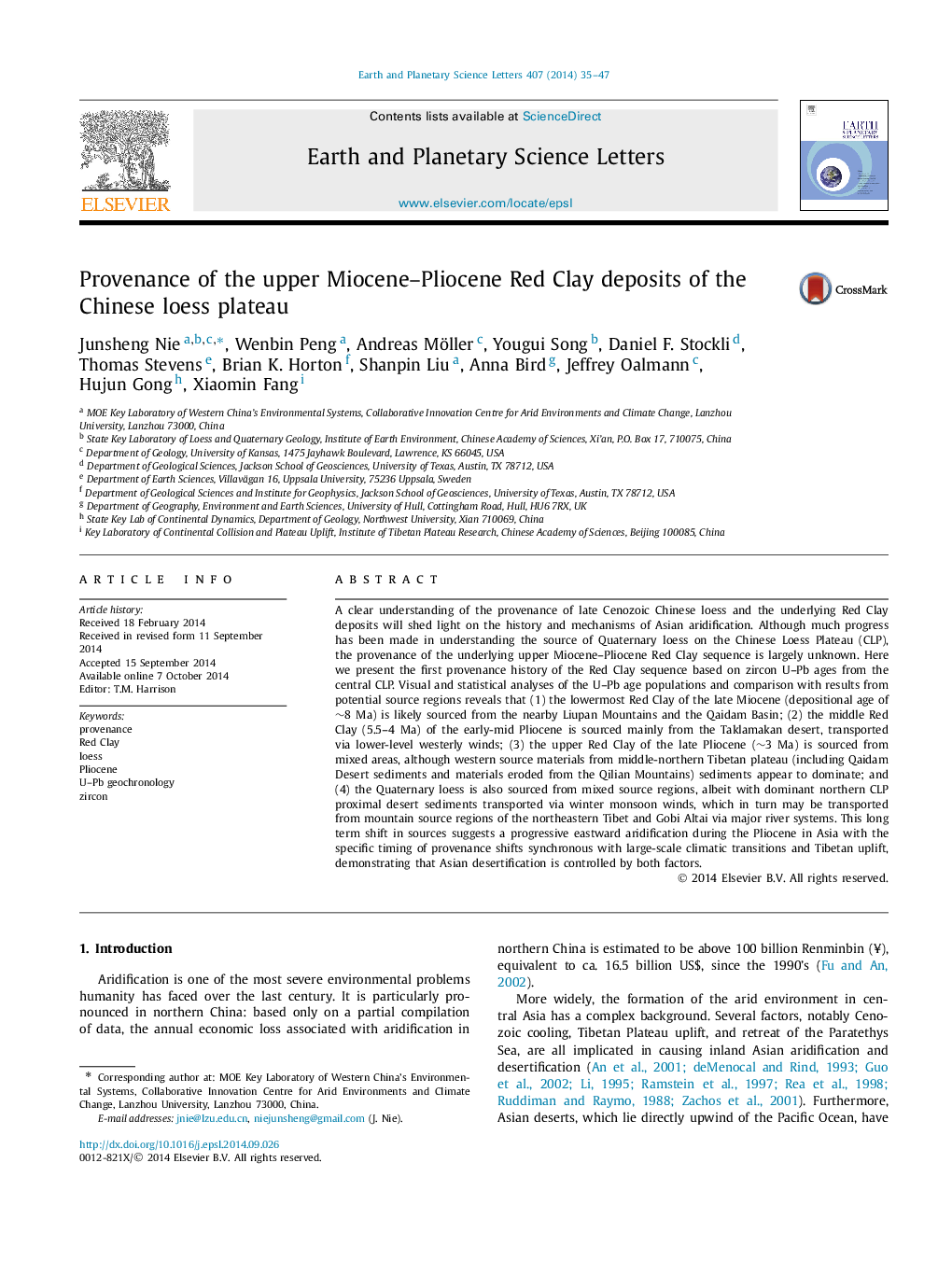| کد مقاله | کد نشریه | سال انتشار | مقاله انگلیسی | نسخه تمام متن |
|---|---|---|---|---|
| 6428878 | 1634749 | 2014 | 13 صفحه PDF | دانلود رایگان |
- First late Miocene-Pliocene Red Clay provenance study based on zircon U-Pb data.
- Eastward expansion of Asian aridification during the Pliocene-Quaternary.
- Asian aridification expansion was forced by global climate change and Tibetan uplift.
- Bottom, middle, and upper Red Clay have different provenance.
- Red Clay and Quaternary loess have different provenance.
A clear understanding of the provenance of late Cenozoic Chinese loess and the underlying Red Clay deposits will shed light on the history and mechanisms of Asian aridification. Although much progress has been made in understanding the source of Quaternary loess on the Chinese Loess Plateau (CLP), the provenance of the underlying upper Miocene-Pliocene Red Clay sequence is largely unknown. Here we present the first provenance history of the Red Clay sequence based on zircon U-Pb ages from the central CLP. Visual and statistical analyses of the U-Pb age populations and comparison with results from potential source regions reveals that (1) the lowermost Red Clay of the late Miocene (depositional age of â¼8 Ma) is likely sourced from the nearby Liupan Mountains and the Qaidam Basin; (2) the middle Red Clay (5.5-4 Ma) of the early-mid Pliocene is sourced mainly from the Taklamakan desert, transported via lower-level westerly winds; (3) the upper Red Clay of the late Pliocene (â¼3 Ma) is sourced from mixed areas, although western source materials from middle-northern Tibetan plateau (including Qaidam Desert sediments and materials eroded from the Qilian Mountains) sediments appear to dominate; and (4) the Quaternary loess is also sourced from mixed source regions, albeit with dominant northern CLP proximal desert sediments transported via winter monsoon winds, which in turn may be transported from mountain source regions of the northeastern Tibet and Gobi Altai via major river systems. This long term shift in sources suggests a progressive eastward aridification during the Pliocene in Asia with the specific timing of provenance shifts synchronous with large-scale climatic transitions and Tibetan uplift, demonstrating that Asian desertification is controlled by both factors.
Journal: Earth and Planetary Science Letters - Volume 407, 1 December 2014, Pages 35-47
